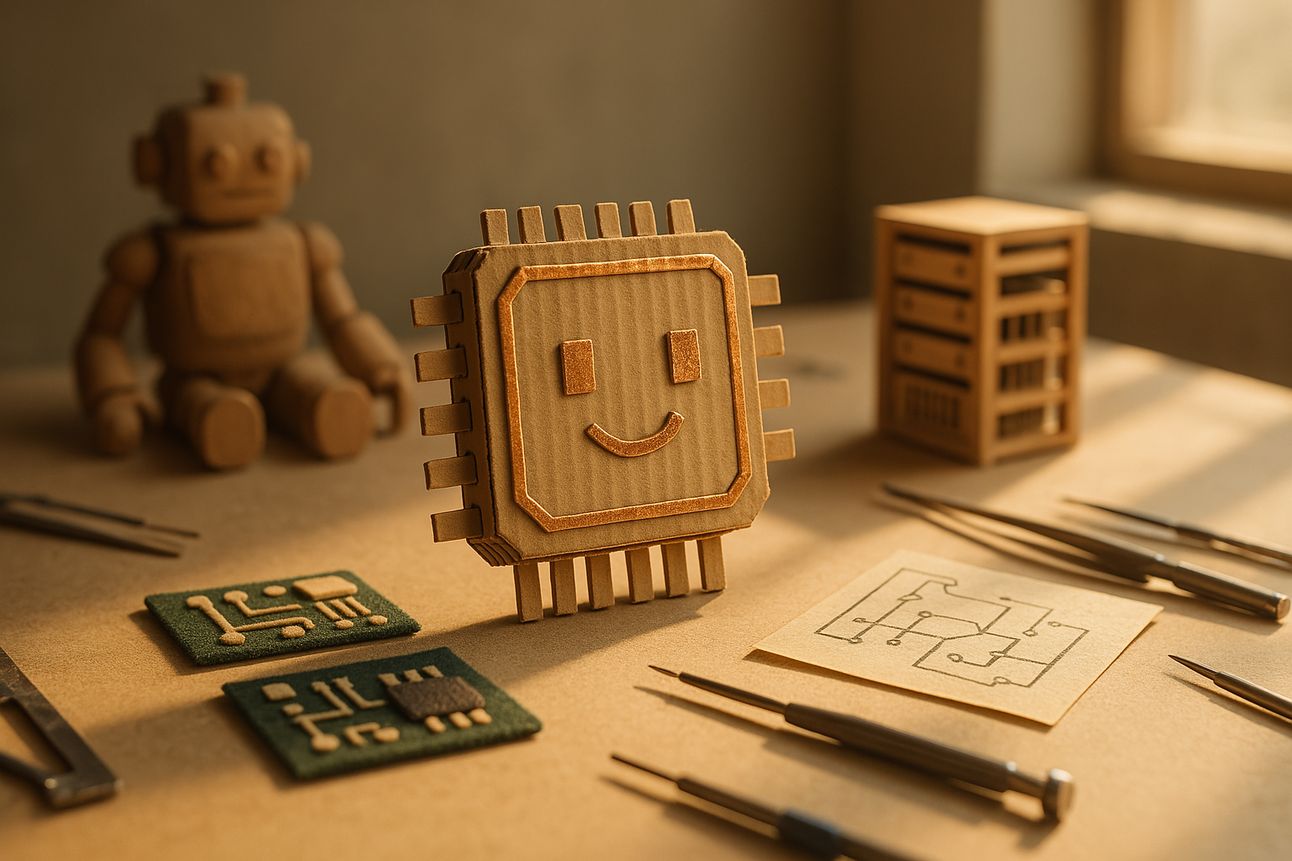- Today On AI
- Posts
- FuriosaAI Rejects Meta’s $800M Offer to Stay Independent
FuriosaAI Rejects Meta’s $800M Offer to Stay Independent
AND: Ant Group Claims 20% AI Cost Savings Using Local Chips

✨TodayOnAI’s Daily Drop
FuriosaAI Rejects Meta’s $800M Offer to Stay Independent
Ant Group Claims 20% AI Cost Savings Using Local Chips
New ARC-AGI-2 Test Stumps Top AI Models, Scores 1%
💬 Let’s Fix This Prompt
🧰 Today’s AI Toolbox Pick
| 📌 The TodayOnAI Brief |
FURIOSA

🚀 TodayOnAI Insight: South Korean AI chipmaker FuriosaAI has reportedly turned down an $800 million acquisition offer from Meta, choosing independence over integration as it doubles down on developing next-gen AI processors.
🔍 Key Takeaways:
FuriosaAI declined Meta's $800M buyout, citing strategic misalignment over business structure and post-acquisition direction—not pricing—as the dealbreaker.
The startup is raising ~$48M (KRW 70B) from investors, with plans to close the round this month.
FuriosaAI has developed two proprietary AI chips—Warboy and Renegade (RNGD)—targeting high-performance inference workloads.
Testing of RNGD, designed for reasoning models, has been completed with LG AI Research and Aramco; LG plans to integrate RNGD into its AI infrastructure.
A commercial launch of RNGD chips is expected later this year, positioning FuriosaAI as a potential challenger to Nvidia and AMD.
💡 Why This Stands Out: FuriosaAI’s decision to walk away from a major acquisition highlights the rising confidence—and competitive potential—of regional AI hardware startups. As tech giants like Meta race to reduce dependence on Nvidia, the battle for custom AI chips is accelerating. Could localized innovation be the key to disrupting the GPU status quo?
AI Breakthrough

🚀 TodayOnAI Insight: The Arc Prize Foundation has launched ARC-AGI-2, a tougher benchmark designed to evaluate the general intelligence of AI models—with even the most advanced systems scoring below 5%, and humans averaging 60%.
🔍 Key Takeaways:
ARC-AGI-2 replaces the original ARC-AGI test, targeting reasoning, adaptability, and efficiency—not brute-force computation.
Models like OpenAI’s o1-pro, GPT-4.5, Claude 3.7, and Gemini 2.0 Flash score just 1%–1.3%, while human panels averaged 60% accuracy.
The benchmark emphasizes on-the-fly pattern recognition using colored grid puzzles that models haven’t seen before.
A new metric—efficiency—limits compute power use, reflecting real-world intelligence constraints.
The Foundation also announced the Arc Prize 2025, a new $1M+ challenge: reach 85% accuracy on ARC-AGI-2 with $0.42 per task.
💡 Why This Stands Out:
ARC-AGI-2 raises the bar for what constitutes real progress toward AGI. By penalizing brute force and prioritizing efficiency, it reframes intelligence as more than just output—it’s about how models think, not just what they solve. As benchmarks grow more rigorous, can today’s frontier models keep up—or are we still miles from true reasoning?
AI Breakthrough

🚀 TodayOnAI Insight: Ant Group claims it cut AI training costs by 20% using chips from Alibaba and Huawei—suggesting Chinese-made hardware may now rival Nvidia's performance, according to a Bloomberg report.
🔍 Key Takeaways:
Ant Group used Chinese chips from Alibaba and Huawei to train AI models at 20% lower cost, based on internal testing.
These chips reportedly performed comparably to Nvidia’s, potentially challenging its dominance in AI infrastructure.
The development follows DeepSeek’s earlier impact on Nvidia’s stock amid claims its models required fewer GPUs.
Despite U.S. export controls, Nvidia chips remain in demand in China, with some buyers reportedly accessing its new Blackwell line.
💡 Why This Stands Out:
If Chinese chips can match Nvidia’s performance at a lower cost, it could signal a turning point for domestic AI hardware—and reshape global supply chains under U.S. tech sanctions. As geopolitical and commercial pressures intensify, is the AI chip market nearing a more multipolar era?
| 💬 Let’s Fix This Prompt |
✨ See how a simple prompt upgrade can unlock better AI output.
🔹 The Original Prompt
"Generate blog ideas for a tech company."
At first glance, this prompt might seem okay. But it's too broad — and that limits the quality of AI-generated results. Let’s improve it using prompt engineering best practices.
✅ The Improved Prompt
Generate a list of unique, engaging blog post ideas for a B2B tech company that wants to attract decision-makers in mid-sized companies. Focus on topics related to emerging technology trends, industry insights, and practical solutions their software offers. Include suggested titles and a 1–2 sentence summary for each idea.
💡 Why It's Better
Specific audience: Targets decision-makers in mid-sized companies.
Contextual focus: Emphasizes emerging tech and practical solutions.
Actionable output: Requests summaries and titles to spark execution.
Tone and style: Guides the type of content (insightful, engaging, relevant).
🛠️ Learn how to adapt this prompt for SaaS, AI tools, dev teams & more →
Read the full PromptPilot breakdown
💡 Bonus Tool: Want to generate and master prompts instantly?
👉 Try PromptPilot by TodayOnAI (Free to use)
| 🧠 Smart Picks |
📰 More from the AI World
Copilot Makes Discovering Ideas Feel Like a Conversation
Vevo & Arc Institute Release 300M-Cell Atlas to Advance Drug Discovery with AI
Meta Launches Aria Gen 2 to Power the Future of Perception & Contextual AI.
Talk to Perplexity: Real-Time Voice Answers Now on iOS
🧰 Today’s AI Toolbox Pick
🍋LemonSqueezy (Finance Tool): Handles the tax compliance burden so you can focus on more revenue with less headache.
💻ZipWP (Web Design Tool): Creates stunning websites in seconds.
⚙️DupDub (Content Tool): An all-in-one content creation platform that allows you to craft your content effortlessly and streamline your workflow.